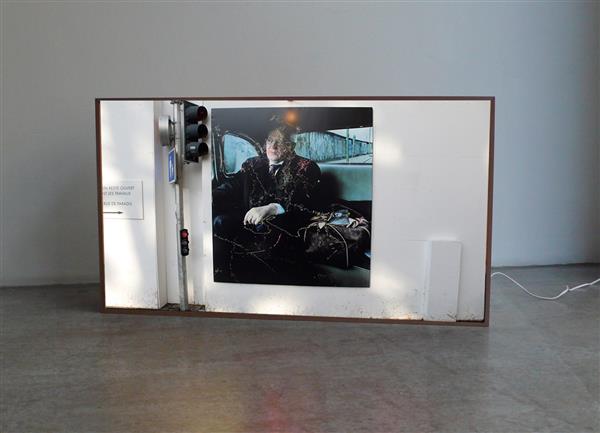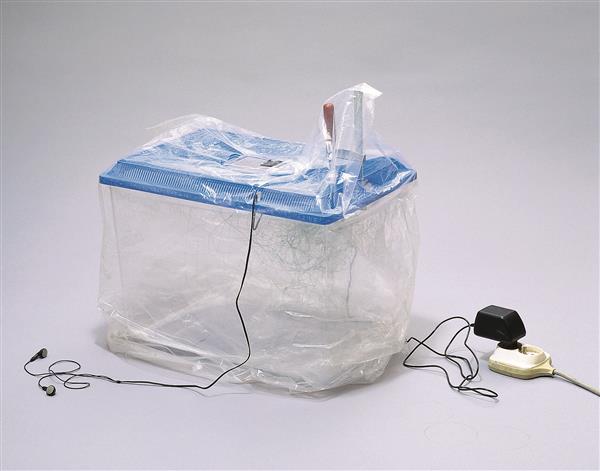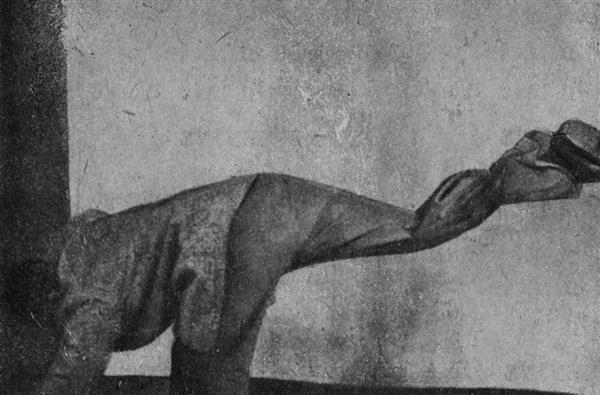Untitled (Gorbachov)
Anna Jermolaewa
lightbox and photograph
edition 2/3 + 2 AP
60 × 110 × 20 cm
2009
Acquisition 2013
Inv. No. 0259
Anna Jermolaewaʼs art sensitizes for absurdities. The artist, who fled Leningrad (today St. Petersburg) in 1989 as an activist from an oppositions-party, is today one of the most incisive figures in the Viennese art scene. She works with video or photography, both media forms accommodating realistic narratives that are always also marked by personal experience. The sobriety of the observations joins, with powerful symbolic significance, a “metaphoric dimension” (Vitus Weh in Frieze, Nr. 8/2013). This applies particularly to the work in the evn collection.
The works are part of the Reisefotos (travel photos), an open and irregular series of visual notes, that the artist has placed in a light-box. If the photos werenʼt so perfectly composed, one could call them snapshots because of their haphazard form. In the shimmering light of the light-box, one can make out a streetcorner and a poster with Mikhail Gorbachev. Bit by bit, the setting is decoded. He sits in a limousine, the Financial Times in an open bag at his side, looking reflectively in the direction of the Berlin Wall. The poster was part of a French luxury-brand campaign, shot by photographer Annie Liebovitz. Celebrities of all kinds – pro-bono, it is understood – let themselves be photographed. In Jermolaewaʼs photo the poster is cropped from a portrait-format, where “Gorbiʼs” right hand is also visible, to almost a square. Script from the advertising slogan is also missing. Is this a conscious intervention, to possibly put the poster just in this place in the photo? It is posted near a street sign, that directs, symbol-laden, to the “Rue de Paradis,” and a traffic light. Anna Jermolaewa photographed the scene just in the moment of “feu rouge,” the red light. The artist encountered the poster and the former general secretary of the Communist party in 2009 in the streets of Nice. A carnival parade had just taken place, and someone had sprayed candy-bright threads from a party-streamer spray on the political icon. A reference to the newly drawn European borders from 1989 or a doubling of the birthmark?
That brings to mind the video Kremlin Doppelgaenger, created in the same year. A doppelgänger of Gorbachev stands at the edge of Red Square and routinely wipes the distinctive mark from his head. When the video was created, former comrade Michajlovic had been practicing this illustrious side-job for 19 years. The Kremlin Palace in Antalya is also visualized in the video. Mainly Russian clientele frequent the hotel, a monumental reproduction of the Kremlin. Pools in place of Red Square tantalize with all-inclusive entertainment. The video switches between the Turkish “Kremlin” and the Moscow square, the artistʼs interviews with hotels guests and the oft-booked fake politician are inserted as additional, important linguistic layers. Both works, from East and West, broach identity and authenticity as well as the change in society and power-relations. Russia as a party-zone? Pastis after perestroika? Consumer desire and nostalgia coalesce strangely 20 years after the fall of the Berlin Wall, and throw an obscure light on both the past and present.
Heike Maier-Rieper, 2015 (translation: Virginia Dellenbaugh)
Continue readingPublications
evn collection. 95–2015 Jubilee, Vienna 2015, p. 185–189


